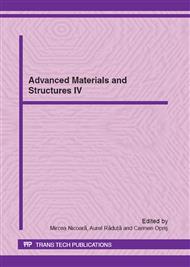p.369
p.376
p.382
p.388
p.395
p.400
p.406
p.412
p.416
Researches Regarding the Properties of Sintered Electrical Contacts Obtained From Mechanically Alloyed W-Cu Powders
Abstract:
In this paper are presented the experimental results regarding the elaboration of electrical contacts using W-Cu composite powders obtained by mechanical alloying (MA) process. For the research commercial powders with a particle size between [10-80] µm were used. Three types of mixtures with different concentrations as follow: 90W-10Cu; 80W-20Cu; 70W-30Cu were mechanically alloyed for 2 up to 6 hours using a planetary ball mill. The mixtures obtained after MA process were pressed in a cylindrical die at 400 respective 600 MPa. The evolution of green densities function the compaction pressure and Cu content was studied. The green billets were sintered in an electrical furnace at 1180 oC and maintained 60 minutes at the sintering temperature in argon atmosphere. The evolution of densities, microstructures and electrical properties of the sintered samples function the Cu content and compaction pressure were studied.
Info:
Periodical:
Pages:
395-399
Citation:
Online since:
May 2012
Authors:
Price:
Сopyright:
© 2012 Trans Tech Publications Ltd. All Rights Reserved
Share:
Citation:


